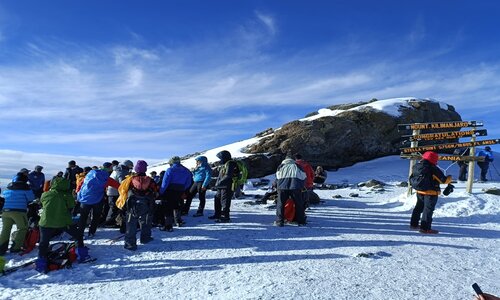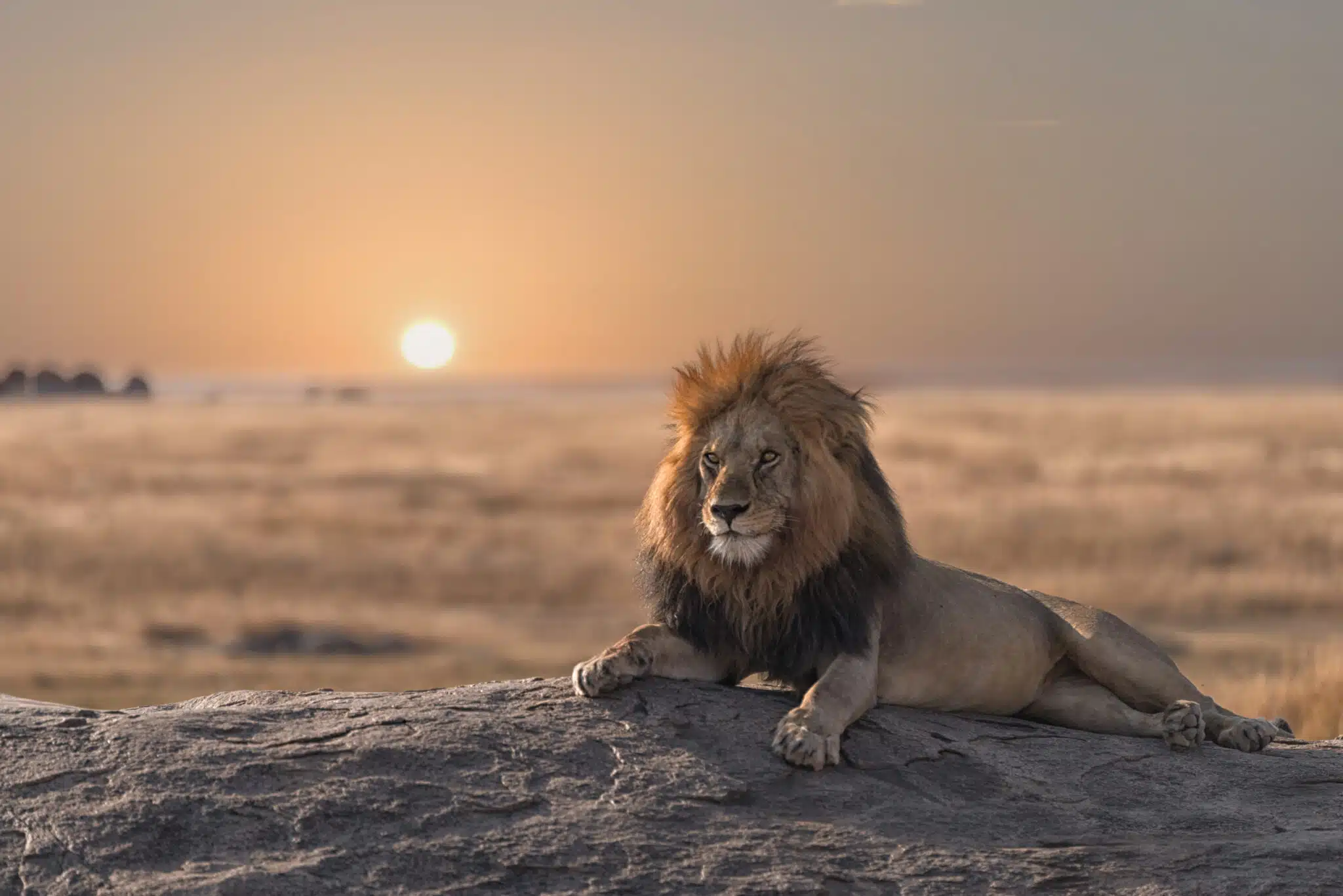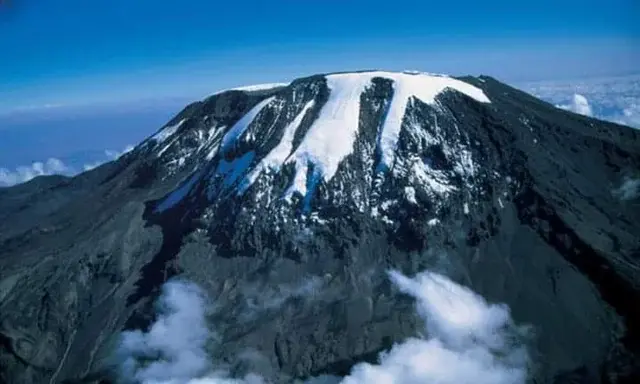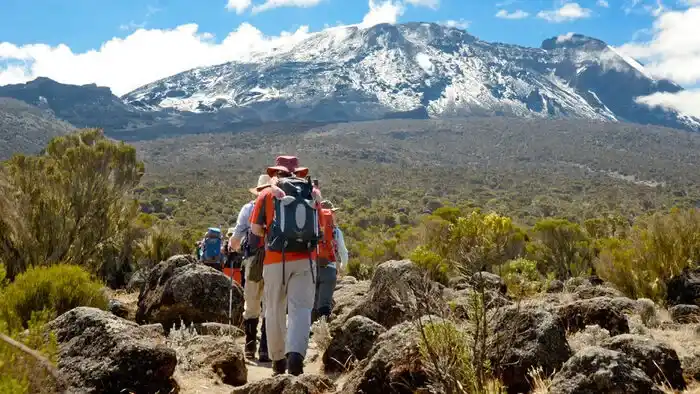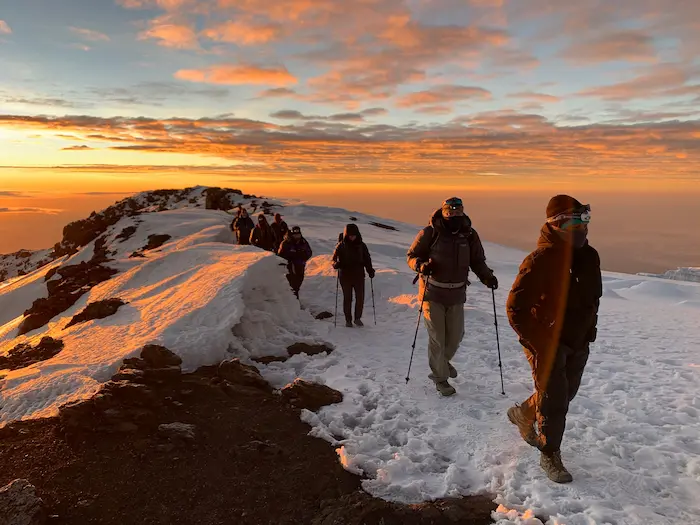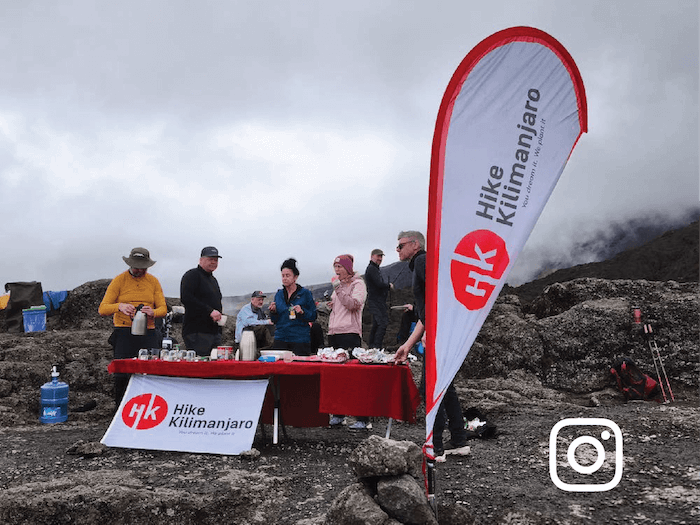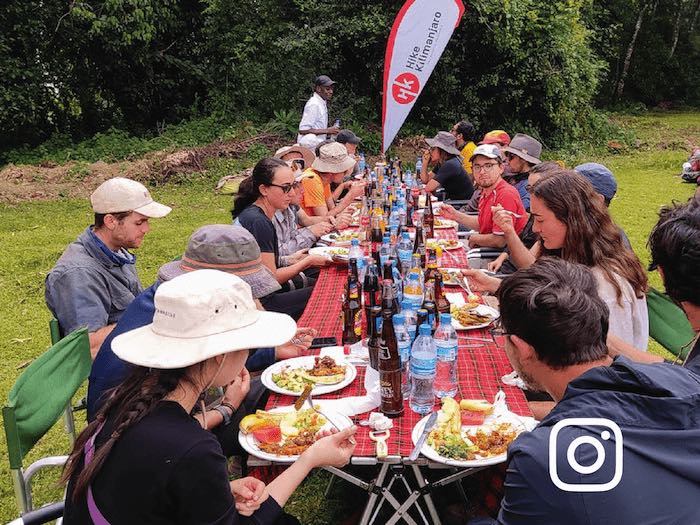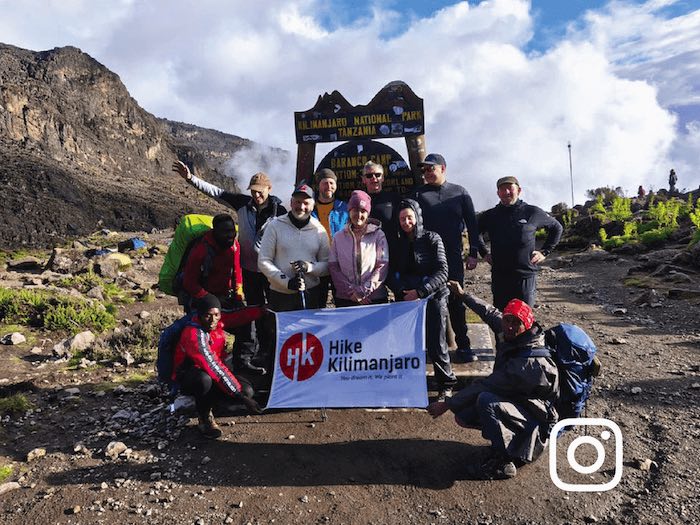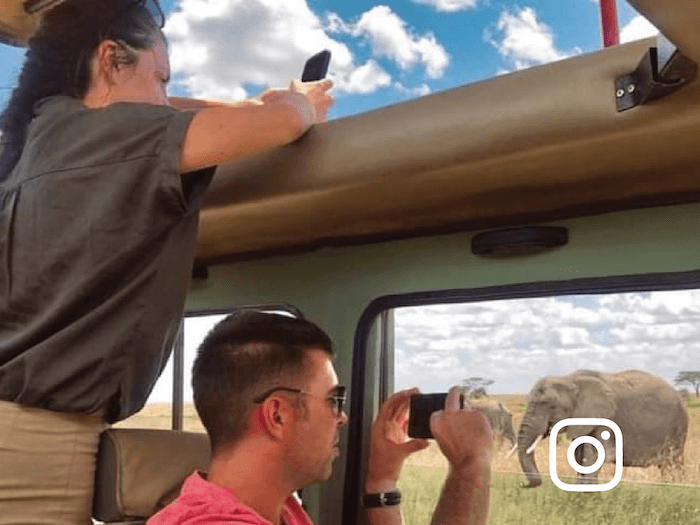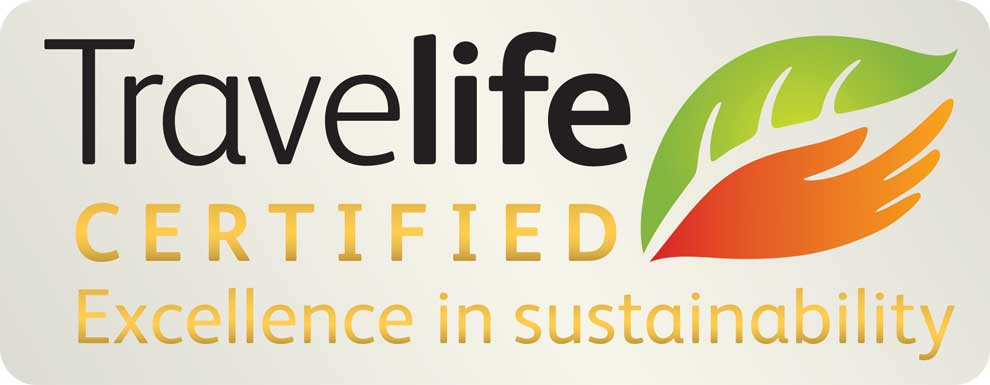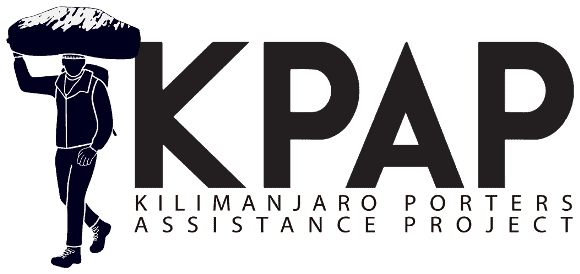The First Recorded Woman to Climb Mount Kilimanjaro
Discover the remarkable story of Miss Sheila Macdonald, who set the pace for her two male companions, slept in mountain caves, and sustained herself with champagne straight from the bottle
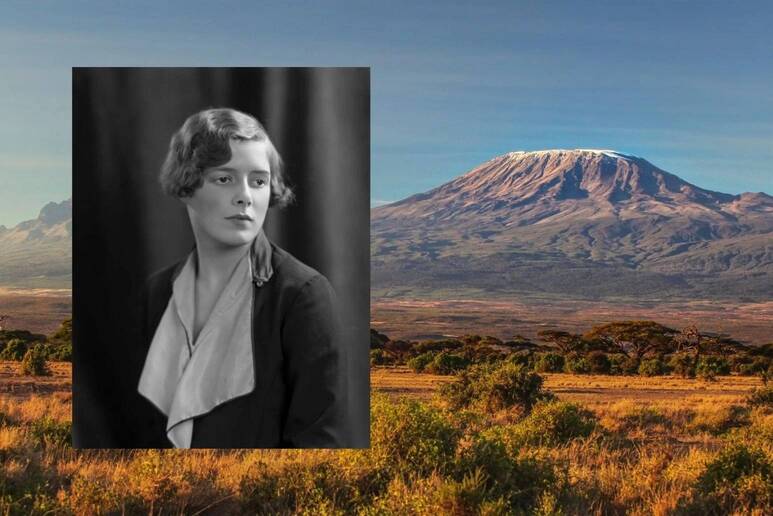
On September 30th, 1927, The Guardian reported a remarkable achievement: “An account has just reached London of how Miss Sheila MacDonald, a 22-year-old London girl, climbed the African mountain Kilimanjaro” noting that it was “the first time the feat has been accomplished by a woman.”
The article vividly recounted how MacDonald “set the pace for her two men companions, slept in caves, and sustained herself with champagne drunk from the bottle.” Despite one of the men being forced to turn back due to physical exhaustion, MacDonald pressed on undeterred and reached the summit alone. “Only those who have done so,” the report remarked, “can imagine how ludicrous one feels when trying to drink champagne out of a bottle at a height of over 19,000 feet.” It’s a colorful and iconic image if perhaps one that slightly exaggerates the role of champagne in her success.
Sheila MacDonald was born in Australia in 1901. Her father, Claude MacDonald, was vice-president of the Alpine Club. She was educated at Cambridge, where she studied Modern Languages and stood out in rowing. An accomplished mountaineer even before Kilimanjaro, she had climbed in Scotland and the Alps and was described by The Guardian as “a tall, well-built girl with shingled hair, who excels in outdoor games and horse-riding.”
Prior to her African ascent, MacDonald had already summited Mount Etna (3,357m) on Sicily’s eastern coast. She also braved dangerous waters on her return from Stromboli, an active volcano in the Tyrrhenian Sea, where she and another young woman risked an angry sea in a small open boat.
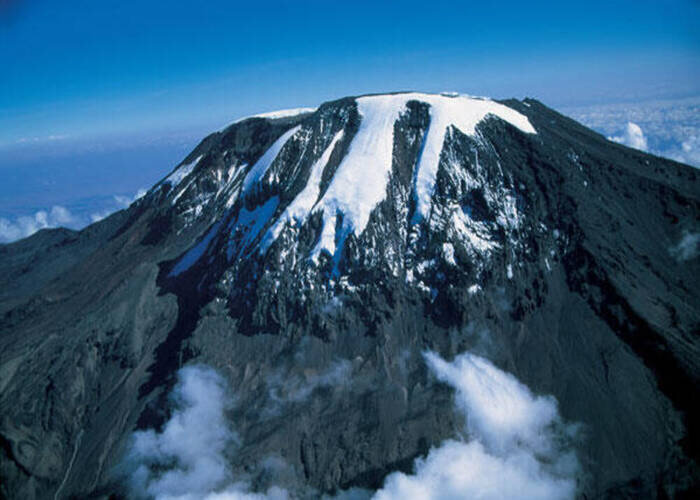
MacDonald set sail for Africa in July 1927, with no intention of climbing Mount Kilimanjaro. Her original plan was to visit her cousin, Captain Archie Ritchie, the chief game warden of Kenya, and enjoy a safari in the region. However, her journey took an unexpected turn during the voyage when she struck up a conversation with Mr. William C. West, whom she had noticed wearing an Alpine Club tie. Their casual exchange revealed that West was headed to climb Kilimanjaro and, on a whim, he invited Miss MacDonald to join the expedition.
“For heaven’s sake, you know nothing about my climbing ability,” she replied, surprised by the invitation. West simply responded, “I know your father’s reputation. I think that you could manage it quite well.

Another passenger aboard the ship, Major Lennox Browne, asked to join the climbing party. “He had never done any climbing,” MacDonald later recalled, “but he felt that I should not be climbing as a lone woman with a single man.” Her account directly contradicts later newspaper descriptions of Browne as “a mountaineer of some experience.” His reasoning is a telling reminder of the era’s prevailing attitudes when women often faced social scrutiny, even outrage, simply for hiking in male company.
The trio MacDonald, West, and Browne arrived in Mombasa on July 21st. Almost immediately, MacDonald was met with opposition from friends of her cousin Archie, who insisted she continue on to Nairobi and forbid her from attempting the climb. Her own parents, expecting her to return to Australia after a brief visit to Nairobi, were similarly “shocked and furious” upon hearing of her plans.
Undeterred, the group pressed on to Marangu in Tanzania, where MacDonald first laid eyes on Mount Kilimanjaro. She recalled a moment during the journey when West pointed out that the summit was now visible. Straining to see through the mist, she replied that she could only make out clouds. West turned to her and said, “You’re not looking high enough
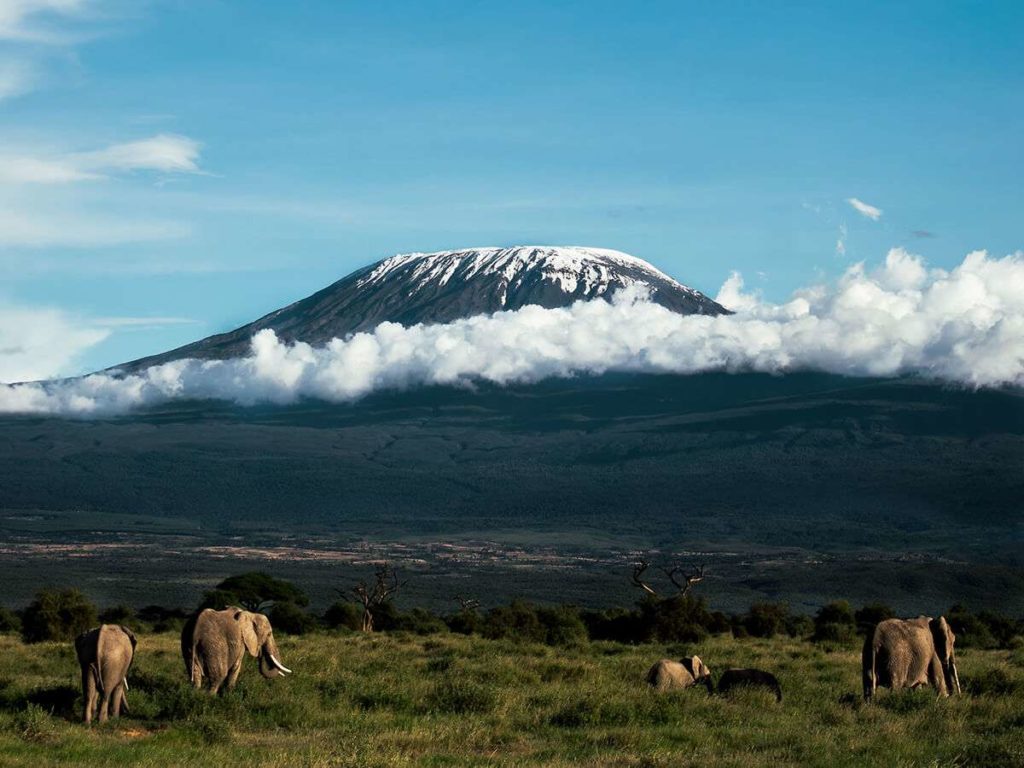
MacDonald was taken aback by the sheer scale of Kilimanjaro. “It was tremendous,” she later recalled. “I thought, ‘If I can get out of this, I shall.’ But it was too late. It’s not a beautiful mountain. It’s rather like Ben Nevis impressive by its immensity.”
Their ascent began to the haunting sound of a kudu horn, blown by the leader of a local village to mark their departure. The party set off through dense deciduous forest, following elephant trails as they made their way upward.
“We went to the left around the crater rim and crawled to the summit, foot by foot. It really was like that. You can’t imagine the relief,” MacDonald remembered. “The men were very courteous to me,” she added in her interview with The Oban Times. “When we stopped for the first night, they said I was to have the tent, and they would just sleep out in their sleeping bags.”
Their journey took them first to the Bismarck Hut (2,712m), where they passed abundant antelope, and then on to Pieters Hut (3,658m). They eventually camped high on the north-western side of the plateau, where the cold was biting so much so that a bottle of ink in MacDonald’s pack froze solid overnight.
As they climbed higher, the team discovered a “remarkable and quite distinct natural rock staircase about two feet wide,” which led them up to the base of Mawenzi (5,149m), the second-highest of Kilimanjaro’s three volcanic cones. There, beneath the towering peak, they came across a weathered food tin containing a list of previous climbers who had reached that point. They proudly added their own names to the record.
“We celebrated our arrival with good wine drunk out of enamel cups,” West later said.
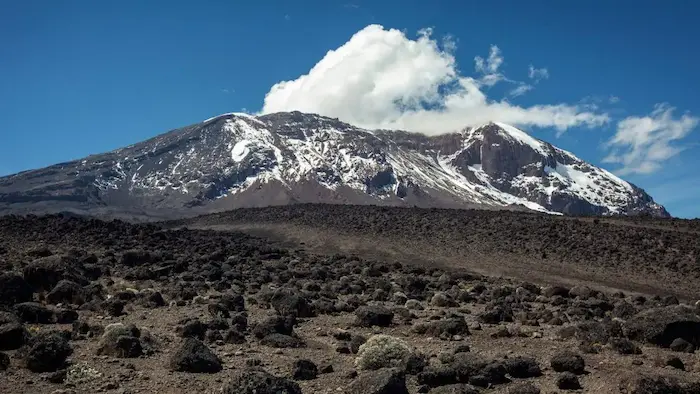
The group descended back to Pieters Hut to rest before making their final push toward Kibo, the true summit of Mount Kilimanjaro, the following day. Along the way, they attempted to locate Hans Meyer’s Hole an iconic cave named after the first European to summit Kilimanjaro but were unsuccessful. Instead, as William West noted with some humor, “our intrepid lady companion found another cave which satisfied her womanly instincts for comfort.”
The summit attempt began at midnight. Unfortunately, the team had only one lantern between them, which proved inadequate in the pitch-black conditions. “There was no moon,” West wrote, “and the darkness was so intense that it was thought inadvisable to continue.” With no choice but to wait, they sheltered in a rock alcove until first light.
As dawn broke, they resumed their ascent but not all would make it to the top. Major Lennox Browne was forced to turn back, collapsing from exhaustion just 100 meters below the summit. Yet MacDonald was determined. “She was undaunted and pleaded to be allowed to finish the ascent,” West recorded. “Of course, I decided to carry on as well, but it was Miss MacDonald who set the pace when we started off again. It was a hard climb for a girl, but she stuck to it with wonderful grit.”
MacDonald later reflected on the final climb in her interview with The Oban Times:
“After a good dose of whisky and lime juice, we reached the crater’s edge at Johannes Notch. We went to the left around the crater rim and crawled to the summit, foot by foot. It really was like that. You can’t imagine the relief of leaning up against the summit cairn and realizing we were there.”
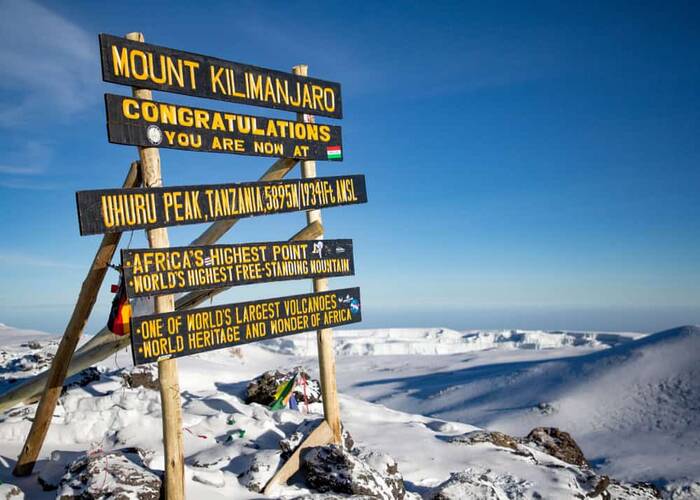
At the summit, they paused to celebrate. West later recalled, “We took one or two photographs and drank a bottle of champagne,” adding with wry humor, “Only those who have done so can imagine how ludicrous one feels when trying to drink champagne out of a bottle at a height of over 19,000 feet.”
Yet it seems West may have indulged in a bit of storytelling flair. MacDonald later clarified, “We opened the [champagne], but there wasn’t a drop left in it because of the altitude. Not one drop.”
The descent, she said, was surprisingly easy. Within weeks, Sheila MacDonald though largely forgotten today had made headlines around the world. Still, her feat failed to impress those closest to her. “My friends were not in the least impressed,” she admitted. “All they really thought about was that we had been through the jungle without firearms.”
Today, Kilimanjaro’s changing climate has made the climb somewhat more accessible than it was in MacDonald’s time. In the early 20th century, thick snow and the threat of blizzards made the ascent considerably more daunting than it is now.
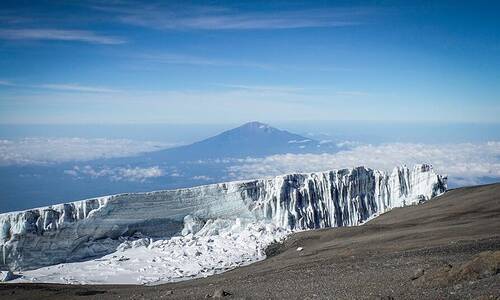
The first recorded ascent of Mount Kilimanjaro by anyone was made on October 6, 1889, when a team led by German geologist Hans Meyer reached the summit. As for the second-highest peak, Mawenzi, the first recorded woman to climb it was English mountaineer Gertrude Benham in 1909. She reached the top alone after her porters, unnerved by the sight of two skeletons and melting snow around a campfire, refused to continue believing the mountain was “bewitched.”
It remains unknown whether any local Chagga or other Indigenous people summited Kilimanjaro long before Western records began far from the gaze of colonial chroniclers. But what is certain is that Sheila MacDonald became the first known woman to reach the summit of Kibo, Kilimanjaro’s highest peak and to pop, if not sip from, a bottle of champagne at over 19,000 feet.
After her historic climb, MacDonald returned to Nairobi and finally went on the safari she had originally planned with her cousin, Captain Archie Ritchie. In 1931, she married Harold Percy Combe, though the Oban Times later described it as a “brief and unsuccessful marriage.” Her adventurous spirit endured: she later traveled to India, served in a hospital in London during World War II, and eventually retired to the Scottish Highlands. There, near Ben Nevis, she spent her final years painting and enjoying the mountains she had always loved.
Sheila MacDonald passed away in 1987. True to her independent spirit, she chose her own resting place: a quiet hillside in Lochaber, overlooking the serene beauty of Glen Spean.
Inspired?
Discover your own path to the Roof of Africa. Read the day-by-day itinerary for our Kilimanjaro summit treks and follow in the footsteps of pioneers like Sheila MacDonald.
Make your dream trip come true with Hike Kilimanjaro .

5/5
Based on 100+ reviews

4.9
Based on 60+ reviews
Customized Travel Proposal
At Hike Kilimanjaro, you can tailor your trip to your preferences. Our sample itineraries are customizable, and our specialists work with you to create your dream trip!
Related posts
Traveler Reviews
These full and frank reviews are from travelers who have traveled with Hike Kilimanjaro previously. The reviews and experiences shown here are from reputable travel websites like TripAdvisor, Google, Facebook, and Trust Pilot, etc.
EXCELLENTVerified "This 3-day luxury safari combined with a Kilimanjaro hike exceeded all my expectations. "This 3-day luxury safari combined with a Kilimanjaro hike exceeded all my expectations. The accommodations were elegant and comfortable, and the guides were knowledgeable and friendly. The safari offered incredible wildlife photography opportunities, and climbing Kilimanjaro was a true test of endurance and strength, but the stunning vistas made it all worthwhile. An exceptional journey that I will cherish forever."Verified "My entire expectations were surpassed by climbing Kilimanjaro. "My entire expectations were surpassed by climbing Kilimanjaro. When one reaches Uhuru Peak, the sensation of accomplishment is indescribable. Because of the well-planned logistics, the amiable crew, and the breathtaking environment, the entire hike was easy and fun. It is a very remarkable event that I would gladly repeat. For adventurers, it's a must.Verified Tanzania truly offers a world-class experience. "My trek up Mount Kilimanjaro in Tanzania exceeded all my expectations. The stunning scenery, from lush rainforests to icy glaciers, was awe-inspiring. The local guides and porters were incredibly supportive and professional, ensuring a safe and enjoyable climb. It was challenging but incredibly rewarding. Tanzania truly offers a world-class experience for anyone looking to conquer Africa’s highest peak."Verified I feel accomplished and thankful. Kilimanjaro climbing was satisfying and difficult at the same time. Along the way, there was breathtaking natural splendour and a variety of diverse habitats. The guiding team's assistance was outstanding and got us through some really difficult times. After completing this amazing journey, I feel accomplished and thankful.Verified Thanks to their knowledgeable advice. From beginning to end, Hike Kilimanjaro offered a smooth and well-planned trip. Their staff made sure we were at ease and ready by being helpful and considerate. Thanks to their knowledgeable advice, climbing Kilimanjaro was difficult but incredibly gratifying. They are the ones I would most certainly pick again for excursions in the future.Verified "An amazing and well-planned adventure. "An amazing and well-planned adventure! The climb was fun and safe because of the team's experience and upbeat demeanour. I was encouraged by the journey and pleased to have reached the top of Africa.Verified Highly recommended this tour agency. Wonderful experience! We had a fantastic trip and enjoyed the entire team; we always felt very protected and taken care of. Highly recommended. I want to thank Keddy in particular; you were the best mentors .Verified "My Kilimanjaro trek was an extraordinary experience. "My Kilimanjaro trek was an extraordinary experience. The route was well-organized, and the staff was attentive and encouraging throughout the climb. The sense of accomplishment upon standing on the summit was overwhelming. The scenery, the challenge, and the sense of connection with nature made this hike truly special. I highly recommend it to anyone looking for a once-in-a-lifetime adventure."Verified Well Organized and Unforgettable. Hiking Kilimanjaro with a well-run tour company was an incredible experience. The crew was courteous and made sure we were fed, acclimated, and inspired at every stage. The support from porters and guides, as well as the companionship among hikers, helped to make the difficult days bearable. It was weird to be at the top above the clouds. Undoubtedly a life-long accomplishment I will always treasure.Verified Top notch safari The customer service is on point. Drivers were there to pick us up on time. We saw all the big 5 in Serengeti /Ngorongoro Crater.The accommodation booked Embalakai had great food and staff.Couldn't have asked for a better safari experience. Top notch
Speak to an Expert
Need assistance with your booking? Our friendly Tanzania-based expert team is here to help. Feel free to reach out with any travel-related questions or concerns.

Maxon

- WhatsApp +255 692 406 444


